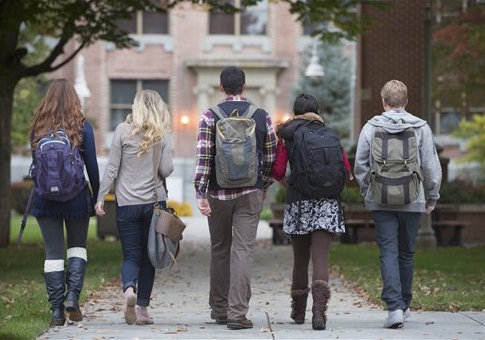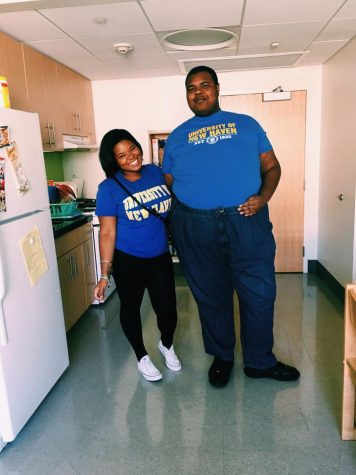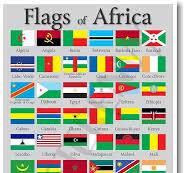Look Out for Transfer Students, Too
The Charger Bulletin talks with Corinne Merjave about the incoming transfer student class.

College students walking on campus (Blend Images via AP Images)
KC: For the 2017-18 year, how many incoming transfer students are there?
CM: “2017-18 encompasses the Fall ’17 and Spring ’18 (since transfer students have two enrollment periods a year) – Fall ’17 numbers won’t be finalized until the second week of September but will likely be just over 200. Spring ‘18 numbers will not be finalized until the first week of February.”
KC: Has the number of incoming transfer students increased or decreased from the past two years?
CM:” Again, final numbers are not yet known, but just comparing the F’15, F’16, and current stats still in progress, we were up last year by about 20 students as compared with Fall 2015 and are now (still three weeks out from final stats) running about 20 students behind Fall 2016; so, no major fluctuations.”
KC: Of the amount of incoming transfer students that are coming, how many are going to be residents?
CM: “About 30% of Fall 2017 transfer students are living in campus sponsored housing.”
KC: What are some of the various states the incoming transfer students are coming from?
CM: “CT, NY, IL, FL, MA, MD, ME, MO, NH, NJ, NM, PA, TX, VA, WI, PR.”
KC: Although, many of them probably have stated several different reasons in their essays, what do you think is the main or fundamental reason they decided to relive their freshmen year at UNH?
CM: “I don’t quite get this question – none of these students really decided to relive their freshmen year, per se; transfer students made the decision to switch schools in order to save money in completing their college education, some have transferred to pursue our nationally recognized programs, some have transferred because they are seeking a career change and pursuing their second undergraduate degree, some have transferred because they felt they did not make the right choice with their initial college decision, etc.”
KC: What are the other demographics of the incoming transfer students (ages, races, majors)?
CM: “20% of the F’17 transfer students have served in the military; students born between 1960 – 1998; average GPA over 3.0; for those who answered, 23% identify as racial minorities; majors ranged across all 4 colleges with the most for Arts & Sciences; 45%female/55%male gender split.”
KC: What services are there for transfer students to seek to further help them become integrated into the campus community and academia? I know when I was a transfer student it was nerve-wracking coming to school as new student and an upperclassman because you see that friend groups and cliques are already formed by your second year of college and you question how can be part of the campus culture and find your own tribe.
CM: “For residential transfer students there is the option of living in the Transfer LLC with other new transfer students and participating in activities and events with the advisor; CASA holds events throughout the semester catered specifically towards transfer students; MVUNH group for the military and veteran students; Transfer SOAR to meet other transfer students and familiarize themselves with current students, faculty, staff, and the campus; club and varsity sports, Marching Band, Greek organizations, and all RSO’s are open to transfer students to meet upperclassmen and new students; ARC provides assistance for students needing academic or residential accommodations; Counseling & Psychological Services Office for students needing personal support; Career Development Center as most transfers will be entering their junior year within a semester or two after transferring and need these services more expediently.”

Khaaliq Crowder is a junior studying communications (journalism) with a minor in black studies. He is a contributing writer, mostly covering the Arts &...






